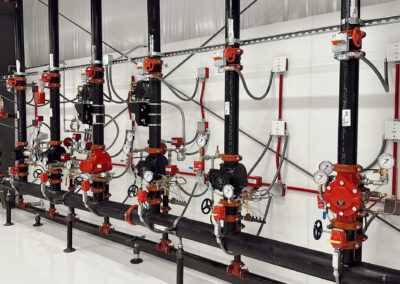After the annual and quarterly sprinkler system inspections, many building owners may think they are all set and compliant with fire codes. Unfortunately, that may not be the case. Sprinkler heads need to be tested outside of the annual and quarterly inspections.
“It’s important for building owners to be aware of the age of the building and the age of the sprinkler heads installed,” said Seth Hill, Service Manager at Ryan Fireprotection. “Often times there aren’t visual cues that the sprinkler heads are not functioning or need to be tested, making it necessary for owners to know their systems and know the codes.”
Hill also noted that building owners should look for corrosion, damage or large amounts of dust on their sprinkler heads. These issues can all make an impact on a sprinkler head’s effectiveness.
Outside of the annual sprinkler inspection, the sprinkler heads have code requirements for testing. The standards set forth by the NFPA vary depending on the type and age of sprinkler heads.
Sprinkler Head Types
- Extra high: These sprinkler heads need to be tested every five years. This is not a common sprinkler head and is often used in ovens or heat treating areas.
- Quick response: This is the most common type of sprinkler head. Following installation, fast-response sprinkler heads do not need to be tested for 20 years. After the initial test, these heads are required to be tested every 10 years.
- Standard: This type of sprinkler head needs to be tested 50 years after installation and then every 10 years following the first test.
- Dry pendent: These sprinkler heads need to be tested every 10 years.

